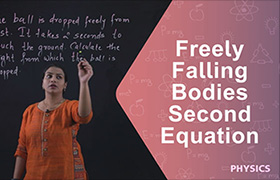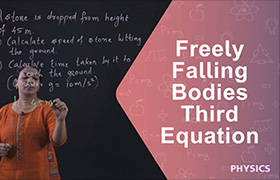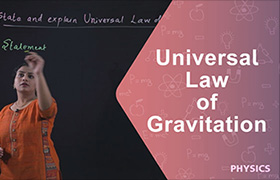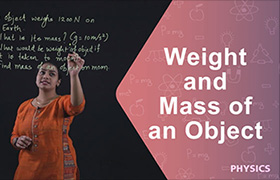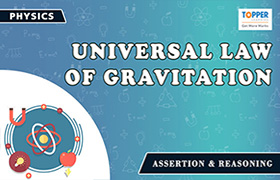CBSE Class 9 Answered
what is Newton's contribution on gravitation?
Asked by munendramishra478 | 12 Jul, 2022, 20:42: PM
From the observation of motion of moon and other celestial objects , Newton was able to arrive universal law of gravitation .
Newton's universal law of gravitation explained the terrastrial gravitation and Kepler's law of motion of planets.
From the observation of falling objects towards earth , Newton reasoned there is a force of attraction between objects and earth
that is known as gravitational force or gravity.
Newton thought that the moon revolving in an orbit of radius Rm was due to centripetal acceleration am
experienced by moon because of earth's gravity.
hence he worked out as
am = ( v2 / Rm ) = 4 π2 Rm2 / T2 ...........................(1)
Newton's universal law of gravitation explained the terrastrial gravitation and Kepler's law of motion of planets.
From the observation of falling objects towards earth , Newton reasoned there is a force of attraction between objects and earth
that is known as gravitational force or gravity.
Newton thought that the moon revolving in an orbit of radius Rm was due to centripetal acceleration am
experienced by moon because of earth's gravity.
hence he worked out as
am = ( v2 / Rm ) = 4 π2 Rm2 / T2 ...........................(1)
where v is speed of moon, Rm is distance between centre of moon and centre of earth and T is period of revolution
In above expression speed of moon v is substituted as v = ( 2πRm ) / T
hence , we get , T2 / Rm3 = 4π2 /v2 = constant
hence , we get , T2 / Rm3 = 4π2 /v2 = constant
Above expression proves Kepler's law of periods
Newton calculated the centripetal acceleration experienced by moon using eqn.(1) .
By comparing this acceleration with acceleration due to gravity on earth , he came to the conclusion that
this acceleration is inversely proportional to square of distance between centre of moon and centre of earth.
These observations led Newton to propose the following Universal Law of Gravitation :
" Every body in the universe attracts every other body with a force which is directly proportional
to the product of their masses and inversely proportional to the square of the distance between them "
to the product of their masses and inversely proportional to the square of the distance between them "
Mathematically, Newton’s gravitation law states that the force F on a point mass m2 due to
another point mass m1 has the magnitude

where d is distance between m1 and m2
Universal Law of Gravitation is the contribution of Newton in Gravitation
Answered by Thiyagarajan K | 13 Jul, 2022, 00:37: AM
Application Videos
Concept Videos
CBSE 9 - Physics
Asked by harshsrivastava8896606 | 17 Apr, 2023, 01:47: AM
CBSE 9 - Physics
Asked by advscjaglan | 09 Aug, 2022, 20:22: PM
CBSE 9 - Physics
Asked by munendramishra478 | 12 Jul, 2022, 20:42: PM
CBSE 9 - Physics
Asked by rk7213908 | 31 Mar, 2022, 12:28: PM
CBSE 9 - Physics
Asked by rk7213908 | 21 Feb, 2022, 16:48: PM
CBSE 9 - Physics
Asked by mannatjohn920 | 15 Feb, 2022, 09:57: AM
CBSE 9 - Physics
Asked by sudiptaroy0607 | 08 Jan, 2022, 16:59: PM
CBSE 9 - Physics
Asked by mj2692076 | 31 Dec, 2021, 16:11: PM
CBSE 9 - Physics
Asked by kalpanatiwaritiwari7030 | 22 Dec, 2021, 19:35: PM
CBSE 9 - Physics
Asked by sonalichavan03.bpps | 19 Dec, 2021, 20:19: PM

